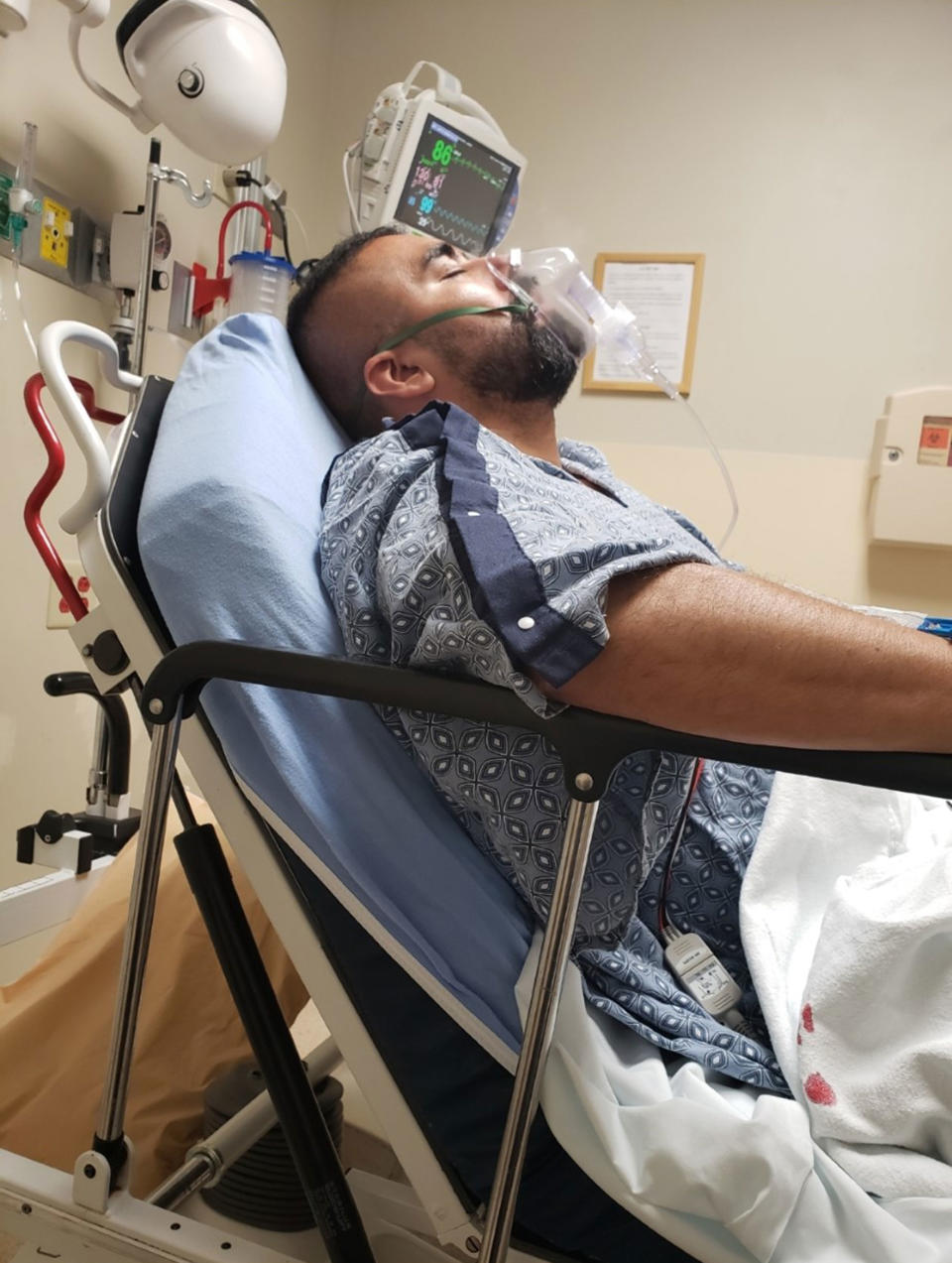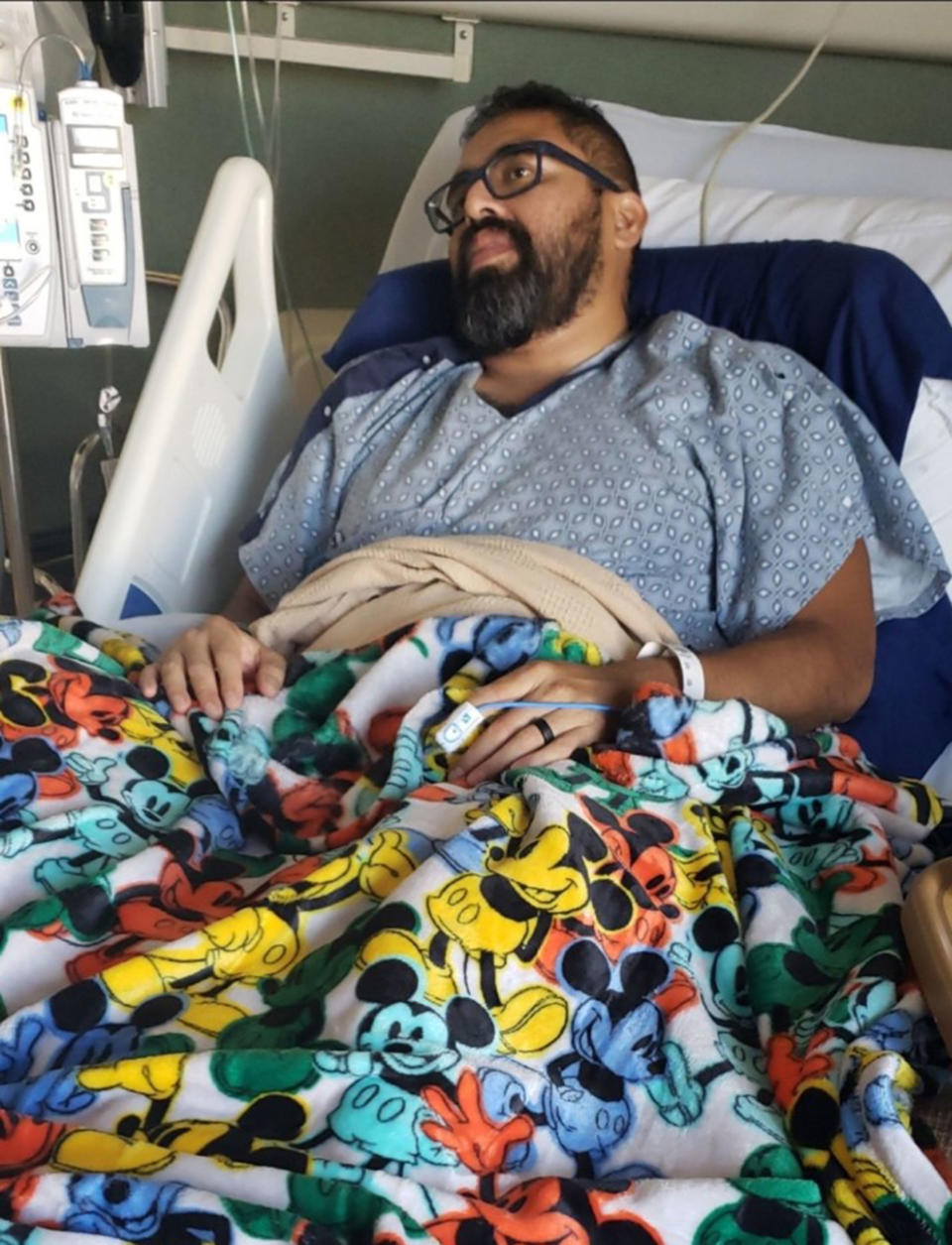Valley Fever Symptoms: Man Survives Lung Infection From Fungus
When Jose Leon suddenly started experiencing intense flu-like symptoms in March, he suspected COVID-19.
He’d get easily winded at the gym and developed a cough that “got a little bit crazy.” He started getting fevers and cold sweats, and lost his appetite. It was the worst he had ever felt in his life, he recalled.
“I couldn’t stop being tired — really tired,” Leon, 40, who lives in Lemoore, California, with his wife, Carmen, and five children, told TODAY. “It was just getting worse week by week.”
“I’ve never seen him fragile like that,” his wife, 39, said. “He was not wanting to walk, he was not wanting to get out of bed. He lost weight extremely fast... it was really scary.”

What is Valley fever?
But when Leon was tested for COVID-19, the result was negative every time. His primary care doctor had few answers even as Leon’s condition deteriorated to the point where Carmen had to take him to the emergency room twice.
The couple didn’t know it then, but it wasn’t a virus that caused the health crisis. The culprit was a tiny fungus that lives in the soil in the southwestern U.S. and has also recently been found in south-central Washington State, the Centers for Disease Control and Prevention warned.
When people breathe in dust that contains the fungus, it can infect the lungs and cause a disease known as Valley fever, or coccidioidomycosis.
In California, the number of reported Valley fever cases has “greatly increased” in recent years, tripling from 2014 to 2018, according to the California Department of Public Health.
Symptoms, which include fatigue, cough, fever, shortness of breath and night sweats, can last for months. They go away without any treatment for many people, but up to 10% of Valley fever patients develop serious or long-term problems in their lungs, the CDC noted.
Strong antifungal medication needed
That’s what happened to Leon, who was finally tested for the disease in April when he went to the emergency room the second time. By the time the result came back positive and doctors finally had a diagnosis, the fungus had already spread all through his lungs, the couple said.

Leon had to receive amphotericin B, a strong antifungal medication given intravenously to treat potentially life-threatening fungal infections.
He had to stay at the hospital until the end of July because his insurance wouldn’t cover amphotericin B injections at an outpatient infusion facility. Leon continued to need the medication, so the only way he could receive it was as a patient at the hospital, Carmen Leon said.

Leon was finally well enough to be weaned off amphotericin B and was “super happy” to go home this month. But he must take another antifungal medication, four pills a day, perhaps for years or possibly for the rest of his life, his wife said. The drug is strong enough to fight the fungus, but also comes with strong side effects, including nausea and loss of appetite.
'This completely changed our lives'
Leon is now considered immune compromised, so he can't be around large groups of people, his wife noted.
The family has been shaken by how much Valley fever has upended their previously comfortable, active life.
“You never can understand exactly how awful it is until you experience it first-hand or you see someone go through it,” she noted.
Leon continues to battle a violent cough and can’t return to work as a machine operator in a plant until next year. Carmen Leon has been working part time to try to keep the household afloat. The couple — who has five children ranging in age from 1 to 17, and bought a new house two years ago — has turned to crowdfunding for financial help.
“This completely changed our lives,” Leon said. “We were happy, we were blessed — which we still are because we get a lot of help, a lot of support and I’m alive, I’m here. But it’s really stressful because it takes two. We’re partners, we’re a couple and now to see my wife doing most of this stuff when I’m supposed to provide, it’s hard.”

How to protect yourself from Valley fever
The couple is urging residents of affected states — including California, Nevada, Arizona, New Mexico and Texas — or people visiting those parts of the U.S. to be aware of Valley fever and ask to be tested for it if symptoms appear.
Anyone who lives, works or travels in an area where the Valley fever fungus grows can breathe in the spores from outdoor dust and become infected, the California Department of Public Health warned.
The agency advised staying inside on windy days and keeping car windows closed while driving through areas where Valley fever is common. Avoid yard work, digging or other activities that involve close contact with dirt, it noted. If you can’t avoid dusty places like construction sites, wearing an N95 mask can help protect against the spores.
Leon, who doesn’t know where or how he was exposed to the fungus, said he was surprised few people knew about Valley fever where he lives — even though central California is a hot spot for the disease.
“We want more people to know about this and protect themselves,” he said.

